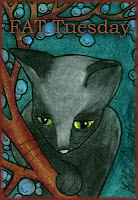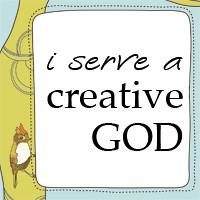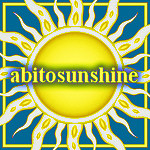I pray for those who believe in and have reverence for God. Some of them may happen to inspect or come upon this writing which Patrick, a sinner without learning, wrote in Ireland. May none of them ever say that whatever little I did or made known to please God was done through ignorance. Instead, you can judge and believe in all truth that it was a gift of God. This is my confession before I die.And so St. Patrick ends his Confessio. I have made it to the end and am glad I read it. I don't think anyone decided tor read along with me, and that's ok. The commitment to come and write about each day kept me at it, and for that I'm glad. And maybe it will inspire some to come read it later. (And sorry this last installment was a day late...I wanted to get it up by St. Patricks day, but, you know, sleep is important too.)
~ St. Patrick
This is one of two pieces of writing which he wrote which we still have, and I hope to read the other (Letter to the soldiers of Coroticus) later...maybe I'll save that for NEXT St. Patrick's Day.
But right now I wanted to talk about some things I noticed related to a couple St. Patrick's Day legends I've come across and how they connect to what he writes in the Confessio, and through in a little history and archaeology too.
The Trinity and the Shamrock
St. Patrick is said to have taught about the Trinity (Father, Son, and Holy Spirit) using a shamrock or three leaved clover. There's no way to prove whether he did or didn't, but the first known story of him doing this is from the 1700's, and there wasn't even a picture of him with a shamrock until the 1600's. (1, 2).
But, what we see in the Confessio is that he did believe strongly in the trinity. There is a passage about the "Father, Son, and Holy Spirit" both in the beginning and end of his confession. So while he may or may not have used a clover to illustrate it, he certainly did teach about the Trinity. Since the Celts considered three an important and powerful number, and their gods sometimes took three forms, the concept of the trinity might have been something they would have been especially receptive too (4).
The Celtic Cross
St. Patrick is also attributed with creating the Celtic cross (though he associated with various other cross designs as well). In modern Christianity, the circle on the Celtic cross symbolizes eternity and Jesus's everlasting love, as demonstrated by His sacrifice on the cross. But there are legends and speculations that St. Patrick incorporated the circle as a way to Christianize Celtic symbols associated with the sun or moon. One of them goes like this..
Another version says that St. Patrick combined the cross with the symbol of the sun (which various Celtic peoples worshiped) "a way to associate light and life with the Christian cross in the minds of his converts." (3) Though there is no proof behind these stories, It's true that as Christianity spread throughout the British Isles, stones originally erected for pagan practices were carved with crosses and rededicated with Christian meaning (3, 4). And, what we do know from his Confessio is that St. Patrick used the sun as a metaphor for Jesus and made a point to contrast this with worship of the sun itself:...when preaching to some soon-to-be converted heathens [St. Patrick] was shown a sacred standing stone that was marked with a circle that was symbolic of the moon goddess. Patrick made the mark of a Latin cross through the circle and blessed the stone making the first Celtic Cross.- Stephen Walker, Celtic Cross History and Symbolism
The sun which we see rising for us each day at his command, that sun will never reign nor will its splendor continue forever; and all those who adore that sun will come to a bad, miserable penalty. We, however, believe in and adore the true sun, that is, Christ, who will never perish.
St. Patrick and the Snakes
Of course, one of the most common myths about St. Patrick is that he drove the snakes out of Ireland, which, taken literally, is entirely untrue, as archaeology has shown there we're never any snakes in Ireland to begin with (1). Most people think that this is a metaphor for St. Patrick driving out pagan practices. And while this may be closer to the truth, it also lacks something of the essence of the truth. "Driving out the snakes" sounds almost militaristic, like the forcible conversion to Christianity that happened in some other places. But the conversion of the Celtic people, which actually started at least 100 years before St. Patrick set food in Ireland, was gradual, and mostly peaceful (5). This comes through in St. Patrick's confession as well. While there is indication that he feared violence in retaliation to his preaching, both to himself and to his converts, there is no indication that he came to Ireland from a place of power or relied on power to convert others to Christ, other than his relying on the power and protection of God. It is encouraging to see one who seemed to take seriously , in the way he ministered, the Biblical admonition below...
But even if you should suffer for the sake of righteousness, you are blessed. And do not fear their intimidation, and do not be troubled, but sanctify Christ as Lord in your hearts, always being ready to make a defense to everyone who asks you to give an account for the hope that is in you, yet with gentleness and reverence; and keep a good conscience so that in the thing in which you are slandered, those who revile your good behavior in Christ will be put to shame. For it is better, if God should will it so, that you suffer for doing what is right rather than for doing what is wrong. For Christ also died for sins once for all, the just for the unjust, so that He might bring us to God, having been put to death in the flesh, but made alive in the spirit;
1 Peter 3:14-18, The Bible, NASB
Click below to find the entire text of
SOME MORE INTERESTING POSTS ABOUT ST. PATRICK
St. Patrick's Burial Site
St. Patrick's Breastplate (a poem supposedly written by St. Patrick)
Sources:
1. https://en.wikipedia.org/wiki/Saint_Patrick
2. http://www.confessio.ie/more/article_moss
3. http://www.celticcultureblog.tk/cross/reconsecrated-stones.html
4. http://www.academia.edu/448782/From_Paganism_to_Christianity
5. http://www.pbs.org/wnet/ancientireland/religion.html
(Other sources are linked in text.)
Shared on...
Throwback Thursday














































No comments:
Post a Comment